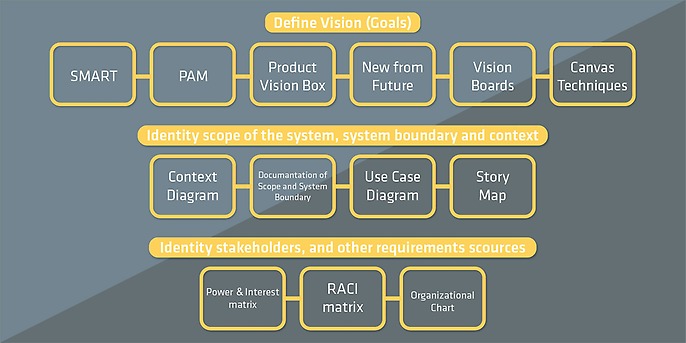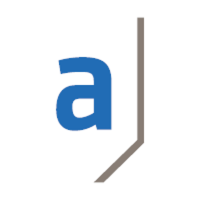8. December 2020 By Pınar Biltekin
How “Smart Start” ensures a clean project start?
Key Takeaways
Each organization is unique. Working environment, structure, and culture may differ in each project. In this article, I want to show you how the agile approach and how adesso Smart Start solve problems according to the needs of each project with the aid of requirement engineering methodologies.
Most of the important meetings are held just before the project kick-off. Stakeholders, the development team and in some cases, end-users discuss their opinions about the project, and everyone tries to understand each other firmly. Very popular Agile methodologies encourage people to have direct communication with both parties. With the help of the agile manifesto, software development would get rid of the process and document overhead -which is a relief for most of the development teams.
Agile Manifesto
Individuals and interactions over processes and tools
Working software over comprehensive documentation
Customer collaboration over contract negotiation
Responding to change over following a plan
Software development is "mental work and plain thinking" but the thinking process is invisible. Even if agile ensures fast and direct communication, most of the ideas in these meetings are not recorded. Eventually, people forget or misinterpret the important points. Mistakes in the project start cannot be identified until the working product has been built and cost businesses extra effort to fix.
According to IREB’s Handbook of RE@Agile, to prevent rework, reduce waste and ensure a clean project start; there are three activities to do; (1) define a vision, (2) identify the scope of the system, context and system boundary, (3) identify stakeholders, and other requirements sources. You can find details on the IREB website, I will not discuss them in detail in this article.

* see the footnotes section
What exactly is Smart Start?
Smart Start is a highly structured kick-off workshop of the project, where a proper preparation upfront by adesso Product Owner and SmartShore Scrum Master is required to gather the information required to perform the Smart Start Workshop.
adesso Product Owner schedules the Smart Start Workshop - with setting a date, inviting customer (cPO, Board and all other customer stakeholders), project stakeholders on adesso side and all SmartShore Team involved in the project.
Activities discussed above will be elaborated during the Smart Start Workshop session. Just like IREB discussed the Clean Start of a project, aGDM Smart Start meets the indispensable activities of a project start. Smart Start enables all related stakeholders and teams to gather correct information about clients, scope, processes, roles and responsibilities in the project. All essentials about the project will be touched on, open topics are recoded and tracked by smartShore Scrum Master and adesso Product Owner until resolution. This is an ideal start for everyone to get to know each other and also to establish a common ground on the project goals and vision, which is a huge boost for team collaboration and motivation.
Define Vision
Deciding project vision is very important to be on the same page with all stakeholders and development teams. According to IREB, vision/goal (agile term) is defined as the most abstract formulation of what should be achieved by the system and set the direction for development and guide all activities. The project vision is more than defining all the tasks and should be clear to everyone in the project.
Good visions (or Goals)
- What system can achieve rather than the system does functionally
- Benefits of the system for people (interaction with users)
- Not predefine the type of the system
- A period (or a specific date) which is clear to every stakeholder, attached to it
- For Agile, every iteration (time period) should have goals to be achieved
Project description, objectives and critical success factors are defined in the Smart Start Document to help to record project vision. All stakeholders and the team are ready to discuss and define the goals of the project.
Define scope, system boundaries and context
Too complex systems and wide scope may fail a project. Before discussing how we can analyze and narrow down the scope, we should understand the related terms.
Scope: The range of things can be designed to develop a system.
Context: Internal and external environment of the system.
System Boundary: The boundary between a system and its surrounding context.
There are different methods IREB can offer: Context Diagram, Natural Language Documentation of Scope and System Boundary, Use Case Diagram and Story Map. These methodologies are familiar to most of the development team members. However, while adopting agile approaches, there is a common misunderstanding that agile does not require documentation. aGDM Smart Start combines the openness of the agile mindset and proper requirement engineering. During the Smart Start workshop, all stakeholders and development teams discuss information about the project and at the end of the project start phase, there is an output of the whole verbal process. After the workshop is completed, meeting notes are circulated to all workshop participants and action items are defined. Dependencies, architecture, functional and non-functional requirements sections have valuable information about defining scope, context and system boundary in the Smart Start document.
Investigate stakeholders
Client profile, satisfaction and performance metric are crucial to understanding who the stakeholders are, how they are related to the project and what they want from the project. Managing stakeholders start from the beginning and it continues throughout the project. Stakeholders may inevitably change at any phase of the project like any other important element. When this happens, a new system or new stakeholder should be identified, and the team should gather new information and requirements from the new stakeholder. Roles and responsibilities details are clear in the final output of the workshop. Roles and Responsibilities Matrix (RACI), Power and Interest matrix and Organizational Chart are included in the document.
At the end of the Smart Start activities, to make sure everything is documented and understood by all workshop participants, Control Gate Meeting occurs to finalize the project start. If the result of the project start is PASSED, the project start is successfully finished, and the development phase can start.
Final thoughts
Smart Start is a reinterpretation of what IREB called Clean Start at Agile projects. With the help of Smart Start, teams can
- increase team motivation and promote communication between the client and development team
- reduce costs by minimizing misinformation and lack of communication
- enhance delivery and end-product quality.
Footnotes
* SMART is an acronym and refers to a simplified style of writing goals and objectives, proposed in 1981 by George T. Doran [Doran1981].According to Doran, the acronym stands for:
- Specific – target a specific area for improvement;
- Measurable – quantify or at least suggest an indicator of progress;
- Assignable – specify who will do it;
- Realistic – state what results can realistically be achieved, given the available resources;
- Time-related – specify when the result(s) can be achieved.
* PAM is an alternative set of criteria for goal formulation proposed by [Robertson2003]. The criteria are defined as follows:
- What is the purpose (P)?
- What is the business advantage (A)?
- How would we measure (M) that advantage?
The PAM criteria focus on the business value behind a goal and exclude the time-perspective of the SMART criteria. A benefit of using this approach at an early stage is that it focuses on the different values instead of forcing a time-perspective into the goal definition.

